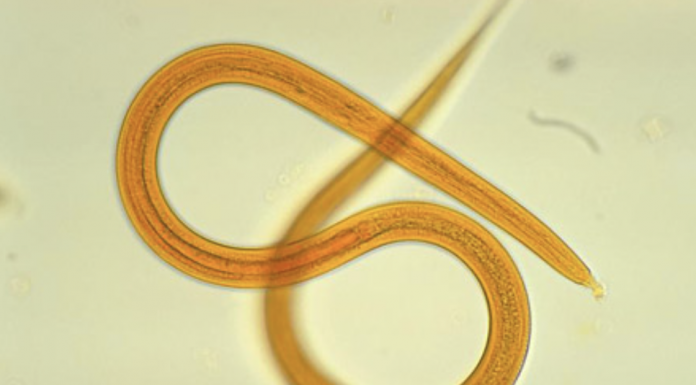THE GUARDIAN – When the letter arrived with the logo of a noted university in the corner, Veronica Reyes Ibarra expected good news. She called her boyfriend, her mom and her sisters over: “You guys, look what I got, I think it’s a scholarship.”
But as she scanned the page, she suddenly wasn’t sure she had the courage to read it out to them.
“Using a research diagnostic blood test,” the letter read, “we have determined that you may have been infected with a parasite.” The letter advised Reyes Ibarra to seek medical treatment.
Fifteen other residents of the tiny Texas community where Reyes Ibarra lives received the same test result, after dozens gave blood and stool samples for an academic study. They ranged from a woman who was pregnant to a two-year-old child.
The intestinal parasite is known by its scientific name, Strongyloides (pronounced stron-ji-LOY-dees). It inhabits the guts of humans and other animals, and its larvae are excreted during defecation.
“Strongyloides can survive undetected in humans for decades, producing generation after generation. But at certain moments – such as when the host is taking steroids – they can become deadly.”
If the larvae are able to contaminate soil – for instance, because of a sewage leak – they can survive for up to three weeks.
In one common infection pathway, they can burrow through the skin of a person walking barefoot, entering the bloodstream, then the lungs, and ascend the windpipe, where they are coughed up and then swallowed.
After the letters went out, a scientific paper was published about Reyes Ibarra’s neighborhood as part of the same research project.
But the parasite infections in her area have stayed under the radar, in part because the researchers preserved the town’s anonymity, identifying it as “Community A”.
Now Reyes Ibarra and her sister, Monica, are sharing their story, as are other of their neighbors … READ MORE.
“Developing effective vaccine candidate antigens is imperative to stop the disease.”
Dove Press Ltd – Strongyloides stercoralis is an intestinal nematode parasite with a global distribution. Most infected individuals have few or no symptoms.
Strongyloidiasis is of primary medical importance, and fatal disease can occur in infected people who become immunosuppressed/immunocompromised through the administration of steroids or because of coinfection with human T-lymphotropic virus I.
Often, misdiagnoses of strongyloidiasis in patients leads to expensive, nonspecific, invasive diagnostic techniques, including endoscopy, barium swallow, cancer biopsies, chest X-rays, and computerized tomography (CT) scans.
Delayed treatment for strongyloidiasis brings in medical complications, such as vomiting, diarrhea, anemia, weight loss, pulmonary abnormalities, and septicemia. Chronic infection is difficult to diagnose by standard stool examination; hence, a reliable recombinant antigen-based serodiagnosis is important.
Though albendazole and thiabendazole reduce the burden of the disease, they are not effective in an immunocompromised host.
Ivermectin has the advantage of eradicating the disease, even in an immunocompromised host, with fewer side effects compared to albendazole.
However, drug treatment is a temporary solution since reinfection can often occur. Thus, developing effective vaccine candidate antigens is imperative to stop the disease. SOURCE.



